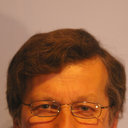The problem of osteoporosis in epileptic patients taking antiepileptic drugs.
Sleutelwoorden
Abstract
BACKGROUND
Epilepsy is a common neurological disorder associated with recurrent seizures. Therapy with antiepileptic drugs (AEDs) helps achieve seizure remission in approximately 70% of epileptic patients. Treatment with AEDs is frequently lifelong and there are reports suggesting its negative influence on bone health. This is especially important in terms of general occurrence of osteoporosis, affecting over 50 million people worldwide.
METHODS
This study refers to two main groups of AEDs: hepatic enzyme inducers (carbamazepine, oxcarbazepine, phenobarbital, phenytoin, primidone and topiramate) and non-inducers (clobazam, clonazepam, ethosuximide, gabapentin, lacosamide, lamotrigine, levetiracetam, pregabalin, tiagabine, valproate, vigabatrin and zonisamide). Some reports indicate that enzyme inducers may exert a more negative influence on bone mineral density (BMD) compared to non-inducers. Bone problems may appear in both sexes during AED therapy, although women are additionally burdened with postmenopausal osteoporosis. Supplementation of vitamin D and calcium in patients on AEDs is recommended.
CONCLUSIONS
Apart from enzyme inducers, valproate (an even enzyme inhibitor) may also negatively affect BMD. However, the untoward effects of AEDs may depend upon their doses and duration of treatment. Although the problem of supplementation of vitamin D and calcium in epileptic patients on AEDs is controversial, there are recommendations to do so.


